
ⓒ YUJIE LIU
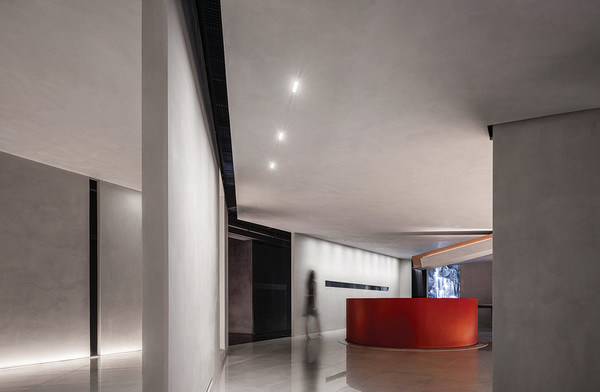
ⓒ YUJIE LIU
Environment subtly affects people's perception, sensory experiences and emotions. Human beings have been living closely with nature for hundreds of thousands of years, and such coexistent state has been rooted in our genes. Later, we created built environment, but our attachment to nature hasn't been changed. It's our innate desire to live in built environment with natural elements. Researches also show that interior spaces with a natural ambience enable people to better perceive information and enhance concentration. The project is a working and exhibition space of MAIMENG, a clothing brand based in Foshan, China. It's situated beside an urban arterial road, which endows it with convenient transportation. However, the noisy surroundings are easily to interfere with activities in the space, which in fact needs a tranquil atmosphere and media to convey the brand image. The space is inclusive, which brings in plants, daylight and rainwater while also accommodating the sounds and activities of users. The transition of space requires a gradual process that triggers the changes of sensory experiences. At the entrance, the designers created a long and twisting bridge-like passage, which slows users' footsteps and opens up a new environment. Blocks of different shapes including stairs, square and round structures are set at staggering heights. The entrance is hidden beside the rectangular block. The white tone of the simplistic cement finish creates a calming atmosphere, and shows a low profile.

ⓒ YUJIE LIU
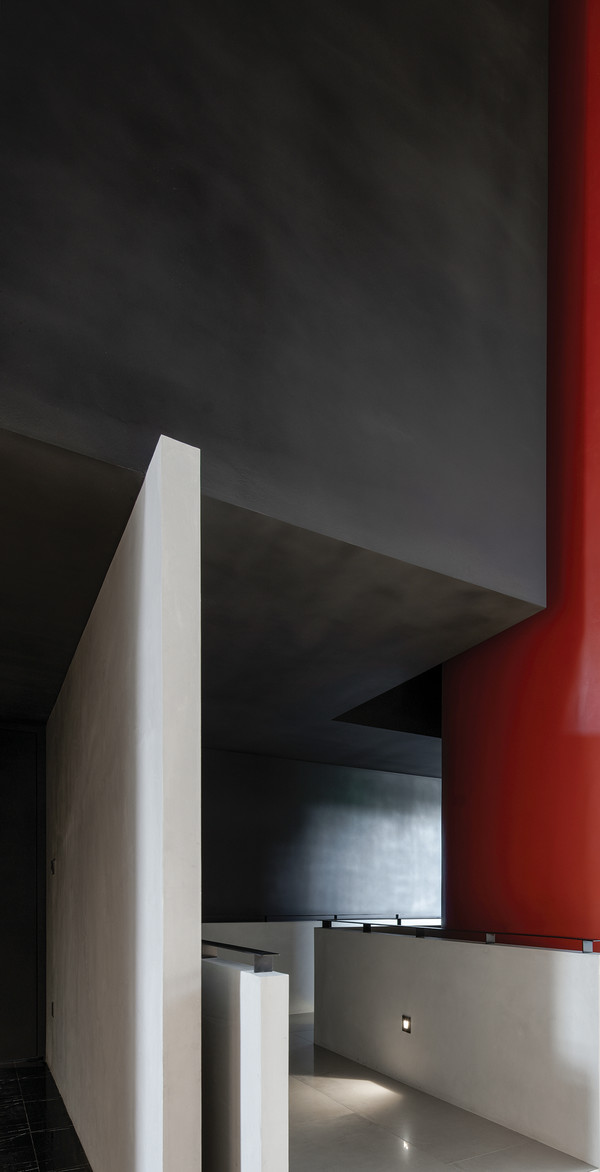
ⓒ YUJIE LIU
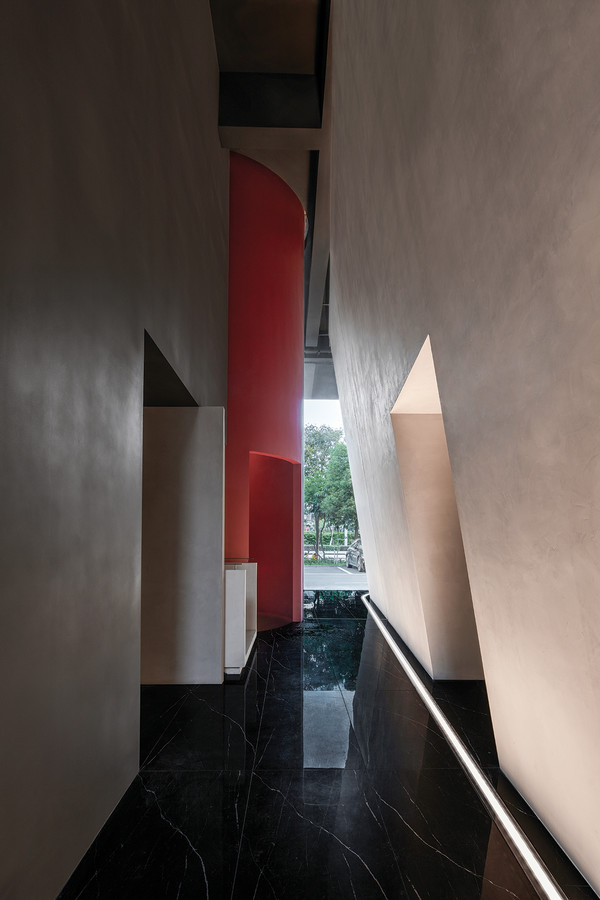
ⓒ YUJIE LIU
On the second floor, discrete walls enclose a hollow-square-shaped corridor. The alternation of solidness and void as well as the separate yet connected relationship of walls produce a serene spatial ambience, and isolate the space from the hustle and bustle of the outside world. The circulation route in the space forms a loop, and people can freely pass through the gaps between screen walls. In this way, interior structures create a sense of fluidity within the space.

ⓒ YUJIE LIU
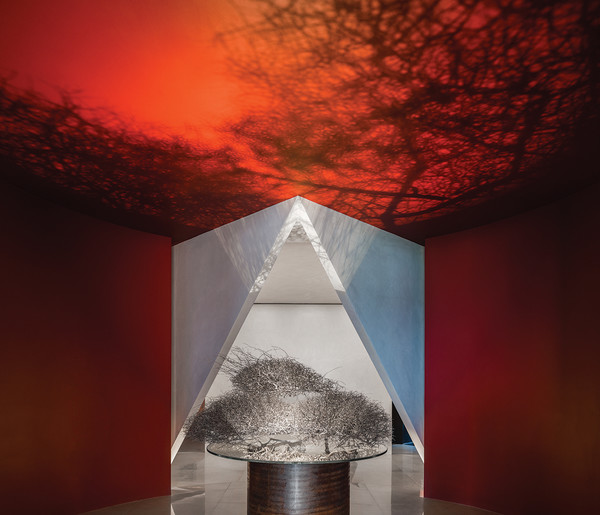
ⓒ YUJIE LIU
The designers extracted geometric elements such as triangle and trapezoid from the logo of MAIMENG and applied them to interior structures. Besides, they studied the features of the brand and tried to find the most appropriate way to show the brand image. Finally, the team created an "art gallery" which breaks the conventional image of manufacturing enterprises, realized diversified spatial functions, and expressed the brand values in a subtle way.

ⓒ YUJIE LIU

ⓒ YUJIE LIU
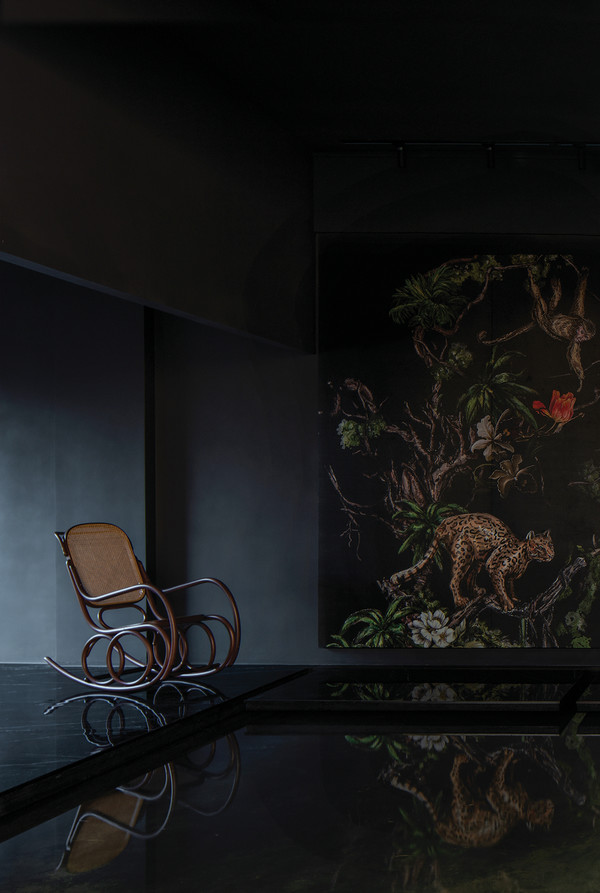
ⓒ YUJIE LIU

ⓒ YUJIE LIU
The hollow-square-shaped corridor is connected to the circular passageway surrounding the pool on the outdoor terrace, together forming a long art gallery. The overall interior design realizes shared and diversified functions, whilst endowing the space with infinite imagination and possibilities. It serves multiple purposes, including socializing, meditation, working, exhibition, new product release and more. Natural elements nourish the space and artistic inspiration. Water, light and winds move in the space freely, and offer varying experiences. Those dynamic elements not only activate the space, but also help stimulate inspiration. The interior design brings people and nature closer, and at the same time embodies the care for human and life.
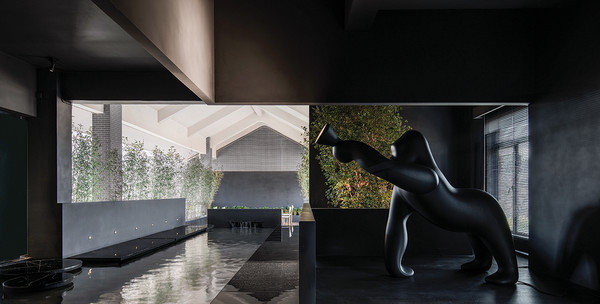
ⓒ YUJIE LIU
브랜드의 이미지를 상징적으로 풀어낸 전시 공간, MAIMENG CORPORATE SPACE
- 이지민 기자
- 2021-03-27 17:05:48
- 조회수 672
- 댓글 0
이지민
저작권자 ⓒ Deco Journal 무단전재 및 재배포 금지















0개의 댓글
댓글 정렬